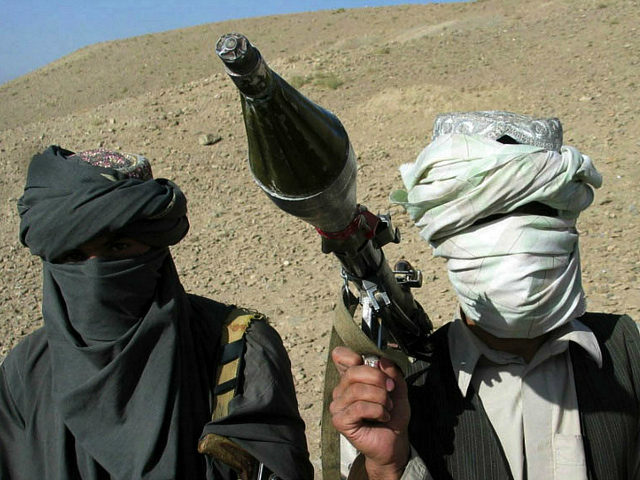WASHINGTON, DC —Afghanistan will “continue to deteriorate” this year despite U.S-led international support, primarily because of capability lapses among the American-trained Afghan forces and the expected “gains” by a resurgent Taliban that grew stronger under former President Barack Obama, Director of National Intelligence (DNI) Daniel Coats warns lawmakers in the most recent Worldwide Threat Assessment.
The assessment, prepared by the U.S. intelligence community and presented to the Senate Intelligence Committee on Thursday, notes:
The overall situation in Afghanistan will very likely continue to deteriorate, even if international support is sustained. Endemic state weaknesses, the government’s political fragility, deficiencies of the Afghan National and Security Forces (ANSF), Taliban persistence, and regional interference will remain key impediments of improvement.
Kabul’s political dysfunction and ineffectiveness will almost certainly be the greatest vulnerability to stability in 2017. ANSF performance will probably worsen due to a combination of Taliban operations, ANSF combat casualties, desertions, poor logistics support, and weak leadership.
The ANSF (or ANDSF) includes both police and army units. Under former President Obama, the U.S. military was prohibited from offensively attacking the Taliban. They had to wait for the terrorists to shoot first.
“Although the Taliban was unsuccessful in seizing a provincial capital in 2016, it effectively navigated its second leadership transition in two years following the death of its former chief, [Mullah Akhtar] Mansur, and is likely to make gains in 2017,” notes the threat assessment. “The fighting will also continue to threaten US personnel, allies, and partners, particularly in Kabul and urban population centers.”
Terrorists, primarily the Taliban, already control or contest about 40 percent of Afghanistan, the U.S. Special Inspector General for Afghanistan Reconstruction (SIGAR) learned from the U.S. military.
Despite receiving more than $71 billion from the United States alone to develop its fighting abilities, the Afghan forces continue to suffer from capability lapses.
Since the war started in October 2001, the United States has devoted $117 billion in American taxpayer funds on reconstruction efforts, including more than 61 percent on the ANDSF alone.
SIGAR reports:
Yet serious problems persist. A dangerous and stubborn insurgency controls or exerts influence over areas holding about a third of the Afghan population. Heavy casualties and capability gaps limit the effectiveness of Afghan soldiers and police. Opium production stands near record levels. Illiteracy and poverty remain widespread. Corruption reaches into every aspect of national life. The rule of law has limited reach. Multiple obstacles deter investors and complicate business operations. The ranks of the job-less grow as the economy stagnates…
The ANDSF faces many problems: unsustainable casualties, temporary losses of provincial and district centers, weakness in logistics and other functions, illiteracy in the ranks, often corrupt or ineffective leadership, and over-reliance on highly trained special forces for routine missions.
The Afghan forces are expected to remain heavily reliant on assistance from the U.S. military and their allies, even though they are in the lead of security responsibilities.
The Worldwide Threat Assessment points out, “The ANSF will almost certainly remain heavily dependent on foreign military and financial support to sustain themselves and preclude their collapse.”
Although the Taliban is the strongest and most prominent terrorist group in Afghanistan, the Islamic State’s Khorasan Province (ISIS-K) will not only remain a “developing threat” to Afghanistan’s security, they will also threaten American and Western interests in the region in 2017, notes the Worldwide Threat Assessment.
The U.S. military did recently kill the ISIS-K leader, but hundreds of members of the group remain in Afghanistan.
Moreover, 15 years-plus since U.S.-led coalition forces began fighting the Taliban and their al-Qaeda allies in Afghanistan, “remaining members of al-Qa’ida and its regional affiliate, al-Qa’Ida In the Indian Subcontinent (AQIS)… maintain the intent to conduct attacks against the United States and the West,” reports the intelligence community.
President Donald Trump inherited chaos and overall deteriorating security conditions in the war-devastated country that are no showing any sign of improving.
Assessments by the Pentagon and the U.S. intelligence community show that Obama left Afghanistan in worse shape than when he took office in January 2009.
Pakistan continues to serve as a sanctuary for he Taliban, ISIS-K, al-Qaeda, and other jihadist groups.
Throughout the Afghanistan war — raging since October 2001— most battles between the United States forces and jihadists have taken place at or around Afghan provinces that border Pakistan — nearly 80 percent in 2010, the deadliest year of the ongoing conflict.

COMMENTS
Please let us know if you're having issues with commenting.